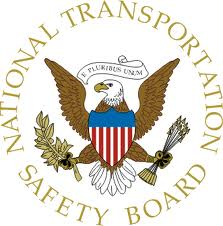An NTSB hearing on Air Show and Air Race Safety was revealing as three panels consisting of FAA regulators, show organizations, and air operations, to renown air show performer, Sean D Tucker gave testimony to the Board.
Debbie Hersman, Chairman of the National Transportation Safety Board outlined the objectives for the hearing as:
- One, to raise awareness of air show and air race safety;
- Two, to educate ourselves and the public on current safety regulations, protocols, and practices related to the planning and operation of air shows and air races;
- And, three, to identify lessons learned and best practices to assure greater safety for spectators and performers alike.
Air show organizers of some of the largest and oldest running annual shows briefed their safety procedures, safety record and FAA oversight to the board during testimony. Two air race groups, Reno Air Race Association and Red Bull Air Races made presentations on their air events.

Basic air event guidelines have evolved and been modified over the years to stay up to date and are more robust according to the John McGraw, FAA, Deputy Director, Aviation Safety- Flight Standards Service. When asked if the rules for air shows are stringent enough, he said yes. But, he added there are changes in place for FAA Guidance- 8900.1 that will further clarify the FAA process for a clearer understanding. Included in the changes are making Air Race guidance its own section and review and approval of the updated ICAS Aerobatic Competency Evaluator Manual among others.
John Cudahy, President, International Council of Air Shows (ICAS) said that 80% of the airshows that you have ever heard of are ICAS [member] shows. "Are we regulated enough? I think we are. But, that is not to say there isn't always room for improvement", said Cudahy, the embrace of Safety Systems Management has lead us to seek constant improvement and we will do that. Our demonstrated current relationship with the FAA and commitment to constantly improve safety- moving the ball forward will probably do much more than new regulation could, according to Cudahy.
There are no spectator fatalities at North American air shows since 1952 with the changes in the Air Show Safety Program made in 1951 and performer mortality rate is greatly improved.
Speaking on performer safety, Sean D Tucker said, "mentorship is the key to success", this is a zero tolerance world. The requirements "to buy in is too easy, too accessible" for obtaining an ACE card, says Tucker. Getting to the point of an airshow performer is a "marathon, not a sprint" and he would like to see higher pilot standards with ICAS elevating the bar.
With air operations highly dependent on the Air Boss, the board expressed surprise there was no official certification in place. Wayne Boggs, ICAS Safety Committee and George Cline, President, Air Boss Inc. explained Air Boss training courses and development programs available through ICAS.
Members of the panel had the opportunity to express what they would do and are doing to improve safety resulted in specific ideas from the industry experts.
In closing, Chairman Hersman said, "One thing is clear from today's discussion. There is much that is being done well in this part of the aviation community ... and it's a valuable part of the aviation community that does so much to showcase the skills and the artistry of flight as well as to serve as aviation's goodwill ambassador." -B Meyer FMI: NTSB